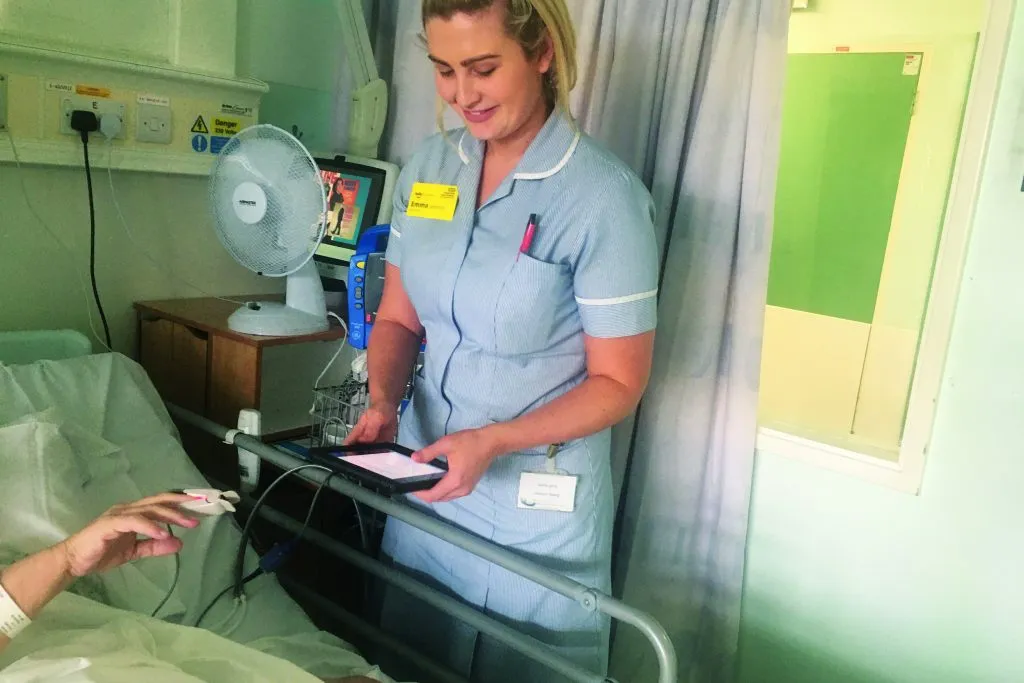Chesterfield Royal is Using Software to Facilitate Positive, Sustainable Change.
Support and training is vital if your staff are to see the value of new software and commit to embedding and sustaining the necessary changes in practice.
‘‘I’m not tech savvy,” insists Kate Turner. It’s a contention that begs an obvious question: just how, then, did she wind up with the job of digital improvement matron at Chesterfield Royal Hospital NHS Foundation Trust? The answer, she says, lies in her interest in patient deterioration. “I was in education for about six years and the majority of my focus there was on deteriorating patients and risk scores. A couple of years ago we brought NEWS2 [the national early warning score system, which helps identify deterioration] in at the trust, and I led on the rollout of it.”
It meant that when the decision was taken to introduce an electronic observations system at the organisation, Ms Turner was seconded to the digital improvement matron role to help lead the implementation.
“My contribution is about the patient side of it, the nursing side of it,” Ms Turner emphasises. “I’ve learnt some things along the way about digital, but it’s my nursing side that I’m drawing on and I pick up other skills as I go.”
It’s the same story in reverse for Barnaby Franklin. He’s an ICT project lead at the trust, providing the technical support for the electric observation (e-obs) system. “I’m not clinical in the slightest but I’ve learnt a lot about nurses, I’ve seen the struggles they go through on a daily basis and experienced that with them, and I’ve learnt about NEWS2 protocols,” he says.
“It’s been a brilliant journey that I’ve been part of, but I couldn’t have done it without Kate,” he says. “And vice versa,” she quickly chimes in. “Our personalities fit,” continues Mr Franklin. “We know where we stand with each other. We can have very frank conversations without tempers fraying and I think we understand the value that each of us brings to what we do.” That strong relationship between the clinical and the technical has, both feel, been crucial to the successful rollout of electronic observations at the trust.
It was last February that the trust signed a contract for System C’s CareFlow Vitals. The software means nursing staff no longer record observations data on hardcopy charts and make manual calculations of early warning scores. Instead, nurses enter the relevant data onto an iPad mini, with the software automatically creating an electronic chart and calculating the risk score.
The implementation at Chesterfield began with a pilot on two wards and was then rolled out to additional areas bit by bit. “We were allowed time to get it right,” says Mr Franklin. “We were allowed a lot of opportunity for engagement and given time to deploy as well. So, realistically, it’s been the best part of a nine-month journey to get the core of Vitals live – from agreeing the contract to [the software being] live across 18 wards.”
A big part of getting it right was enabling nurses to become familiar with the system before its introduction. “We offered lots of opportunities for training,” reports Ms Turner. “We’ve got an incredible divisional clinical educator team that gave us a huge amount of support and were a vital part of the rollout.”
Formal one-to-one training, group training, drop-in sessions, online learning and support on the go – all were on offer from nurse educators and IT support staff. There was patient engagement too, “because this was the first big digital drive within the trust that patients were actually going to see”.
It remains relatively early days for the rollout and so business intelligence is still being collected on the difference the system is making. But what is beyond doubt is that it is supporting increased efficiency. Staff can now log on from anywhere in the trust to see the observations and early warning score for a patient.
It may have involved a lot of work to get to this stage – “it’s all about support on the wards, engaging senior nurses, making sure you’re there with nurses when they’re first putting in obs”, argues Ms Turner – but those who carried it out have no doubt it was worth it.
“That level of support meant the change was sustained,” reports Mr Franklin. “The nurses have been on the journey with us – they’ve not had it done to them. That’s why they’ve liked the system and why the change has sustained.”
First published in Nursing Times, April 2020

